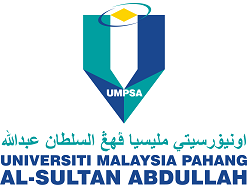Innovative Use of Pineapple Peel as a Coagulant: Insights from Factorial Analysis
DOI:
https://doi.org/10.15282/jceib.v11i1.11259Keywords:
Pineapple peels, natural coagulant, wastewater treatment, turbidity reductionAbstract
This study aims to optimise the preparation and application of pineapple peel coagulant to maximise turbidity reduction from simulated wastewater. The investigated factors include the drying time (0 and 24 h), settling period (0 and 24 h), coagulant dosage (1 and 2 ml), and agitation speed (10 and 50 rpm). The turbidity values were measured using the HACH Portable Turbidimeter (model 2100Q) and the viscosity values were obtained using the Brookfield Viscometer (model LV-DVII). Design Expert software designed the experimental setup and a two-level factorial design was used to analyze the data in accordance with that. Based on the analysis, the best condition to maximise turbidity reduction was suggested using 24 h dried pineapple peel and a settling period of 24 h. At this condition, the highest turbidity reduction of 71% was achieved, from 40 to 11.6 NTU. In contrast, undried pineapple peels with no settling period achieved a significant 61.69% turbidity reduction, demonstrating practical and time-efficient benefits. The p-value of 0.0003 shows that the chosen model is significant. The R2 value of 0.8795 explains the fitted model for turbidity reduction. Therefore, investigating the production of coagulants from pineapple peel waste may be an alternative method to reduce turbidity while producing a useful product.
References
[1] The Business Research Company. Wastewater Treatment Plant Global Market Report 2024. https://www.thebusinessresearchcompany.com/report/wastewater-treatment-plant-global-market-report. Access in November 2024.
[2] M. B. Bahrodin, N. S. Zaidi, N. Hussein, M. Sillanpää, D. D. Prasetyo, and A. Syafiuddin, “Recent advances on coagulation-based treatment of wastewater: Transition from chemical to natural coagulant,” Current Pollution Reports, vol. 7, no. 3, pp. 379-391, 2021.
[3] M. Šćiban, M. Klašnja, M. Antov, and B. Škrbić, “Removal of water turbidity by natural coagulants obtained from chestnut and acorn,” Bioresource Technology, vol. 100, no. 24, pp. 6639-6643, 2009.
[4] R. Husen, J. Idris, N. D. Wakimin, J. Mijim, J. L. Diman, M. Lawrence, and V. J. Mian, “High cod and turbidity removal in the treatment of polluted pond water using low dosage of pineapple leaf coagulant: A preliminary study,” Journal of Asian Scientific Research, vol. 11, pp. 42-49, 2021.
[5] N. S. Harith, N. Abd Rahman, N. A. Zamanhuri, and S. Abd Hashib S. “Microwave-based antioxidant extraction from pineapple peel waste,” Materials Today: Proceedings, vol. 87, pp. 126-131, 2023.
[6] B. G. Fouda-Mbanga and Z. Tywabi-Ngeva, “Application of pineapple waste to the removal of toxic contaminants: A review,” Toxics, vol. 10, no. 10, p. 561, 2022.
[7] D. Diver, I. Nhapi, and W. R. Ruziwa, “The potential and constraints of replacing conventional chemical coagulants with natural plant extracts in water and wastewater treatment,” Environmental Advances, vol. 13, p. 100421, 2023.
[8] S. P. Sha, D. Modak, S. Sarkar, S. K. Roy, S. P. Sah, K. Ghatani, and S. Bhattacharjee, “Fruit waste: A current perspective for the sustainable production of pharmacological, nutraceutical, and bioactive resources,” Frontiers in Microbiology, vol. 14, p. 1260071, 2023.
[9] M. Mohd Ali, N. Hashim, S. Abd Aziz, and O. Lasekan, “Shelf-life prediction and kinetics of quality changes in pineapple (Ananas comosus) varieties at different storage temperatures,” Horticulturae, vol. 8, no. 11, p. 92, 2022.
[10] L. E. Jun and A. L. Ahmad, “Natural, biodegradable and non-toxic coagulant from g. hylocereus foliage: Optimisation on coagulant preparation,” Chemical Engineering Transactions, vol. 45, p. 1477-1482, 2015.
[11] A. Soros, J. E. Amburgey, C. E. Stauber, M. D. Sobsey, and L. M. Casanova, “Turbidity reduction in drinking water by coagulation-flocculation with chitosan polymers,” Journal of Water and Health, vol. 17, no. 2, pp. 204-218, 2019.
[12] Y. J. Zhang, X. X. Li, X. L. Zhao, B. Sun, and Q. Q. Zhang, “Turbidity removal of summer high algae content Taihu Lake raw water using composite coagulants of polyaluminum chloride and polydimethyldiallylammonium chloride,” Huan Jing ke Xue= Huanjing Kexue, vol. 29, no. 8, pp. 2195-2200, 2008.
Downloads
Published
Issue
Section
License
Copyright (c) 2025 The Author(s)

This work is licensed under a Creative Commons Attribution-NonCommercial 4.0 International License.



